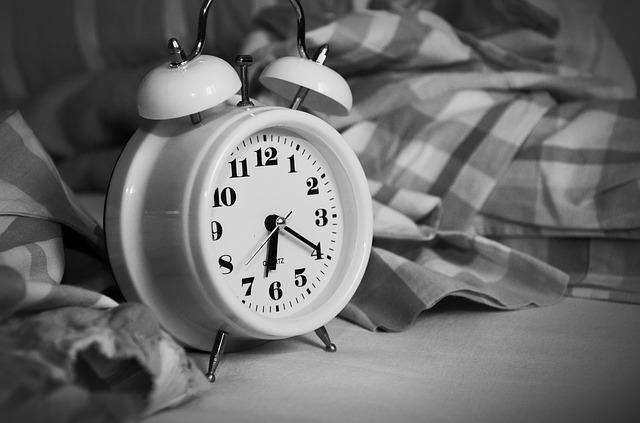Posts by Hayes
Reclaiming your Sleep with Chronic Pain
Chronic pain poses problems when it comes to bed time
How could one possibly fall asleep with a pounding headache, or searing pain in the neck or lower back? It’s a nasty cycle: because sleep is so integral to immune function, losing sleep actually perpetuates pain- and pain increases anxiety which further stops you from sleeping. How do we break ourselves out of this cycle? On the worse days, sleep loss may be an inevitability; otherwise its time to take back the steering wheel from pain and put yourself firmly in control of falling and staying asleep.
What you can do to find sleep with chronic pain
- Quality of sleep materials: a properly adjusted mattress and pillow can do wonders for your sleep experience.
- A calming sleep environment: ambient temperature, noise and smells can all be controlled to create a relaxing environment that is conducive to sleep.
- Progressive relaxation: while trying to fall asleep, take deep breaths and tense different muscle groups.
- Consider supplements: melatonin is a chemical that the body produces naturally to influence sleepiness- it can be purchased over-the-counter to add an extra boost to that sleepy feeling.
What not to do when trying to sleep with chronic pain
- Caffeine after 4 p.m. Caffeine can stay active in the blood stream for up to 8 hours after consumption.
- Alcohol before bed: the sedative effect helps you to drift off, but it interferes with restful sleep and can actually wake you up once it wears off.
- Exercise in the 3 hours before bed: exercise also jogs your brain muscle, so exercising right before bed often doesn’t have the exhaustive effect that will make you fall asleep.
Finding pain relief in Dunedin, FL
Long standing pain sufferers are constantly on the search for relief. At Hayes Family Chiropractic, we want to treat your pain at its source and this begins with a thorough spinal examination to determine exactly what that source is. Proper alignment of the spine can go a long way toward easing nerve pain that keeps you from sleeping. From here, we develop an individualized plan for rehabilitation that includes educating you about your treatment so that you can take control of your pain. Call our office in Dunedin to schedule an appointment today.
Dr. Chris Hayes, D.C.
Spice is Nice: How to Eat with Chronic Inflammation
Is inflammation just a buzz word?
Words associated with wellness have a tendency to attract a certain amount of hysteria- inflammation is no different. The presence of inflammation has been linked to so many health problems its hard to keep count; and here we were thinking it was just a part of the body’s natural healing response. And while the latter is true, inflammation becomes problematic in excess. Chronic inflammation causes your immune system to wear itself out as it responds to perceived dangers and an eroded immune system leaves you at risk to the development of a number of diseases.
Inflammation from a chiropractor’s perspective
For chiropractors, there is one key focus: inflammation as it causes stiff joints and other arthritis symptoms. Wear and tear injuries such as the degradation of joints over time cause your immune system to constantly perceive a threat and chronic inflammation is a natural result. Keeping inflammation down is a key way to lessen the hold of pain and stiffness on your life.
Eating anti-inflammatory is easy
With an anti-inflammatory diet, we are attempting to ease the effects of this low-grade, chronic inflammation. The elements of an anti-inflammatory diet are in line with other healthy diets and it can be delicious. Here are some good ways to start adding anti-inflammatory ingredients into your diet:
- Spice it up: turmeric is well-known for its anti-inflammatory capacities.
- Think fish: cold-water varieties are rich in omega-3 fatty acids which are a powerful anti-inflammatory.
- Focus on antioxidants: the kind you get from fruits, vegetables and green tea.
- Healthy oils and fats: bad fats and vegetable oils have a tendency to raise inflammatory markers in the blood. As an alternative, use olive oil or coconut oil.
When eating anti-inflammatory, try to limit:
- Soda and alcohol
- Processed sugars and fats
- And its always worth repeating, all junk food!
Fighting inflammation in Dunedin, FL
At our office in Dunedin, we want to help you eliminate long-standing chronic inflammation so that you can break yourself free of pain and stiffness. Diet is a powerful way to balance your immune system’s inflammatory response. Find out more ways we contribute to your overall well-being by giving our office in Dunedin a call today!
Dr. Chris Hayes, D.C.
Combating Adrenal Fatigue the Natural Way
What is adrenal fatigue?
Adrenal fatigue is a term that encompasses a few different disorders (and usually a combination of them) to describe the profound fatigue that is experience by people who are under mental, emotional or physical stress. It is a truly modern syndrome that is brought on by high-stress lifestyles and affects the body’s ability to recuperate from stressors in an effective manner to prevent them from compounding and creating problems in your life. Let’s take a closer look at the anatomy of the problem.
Symptoms of adrenal fatigue
- Depression
- Difficulty sleeping and waking up
- Exhaustion in the middle of the day
- Weight gain
- Muscle tension
- Loss of focus
Your adrenal glands are powerhouses
They produce over 50 hormones which directly regulate almost every human bodily function. As it relates to stress, the adrenal glands release adrenaline hormones when the brain registers a, “threat.” This could be something simple like spilled milk, something profound like the death of a family member, or a reaction to physical pain. An adrenal response is akin to survival- all processes that are not essential for immediate survival are mitigated; things like: digestion and protein synthesis.
Adrenal fatigue is about imbalance
Essentially, your adrenal glands can’t keep up with the amount of stress that is input on a daily basis. Your chronic stress is creating chronic problems in your body. We say it’s time to start supporting your adrenal glands. At Hayes Family Chiropractic, we like to fend off adrenal fatigue the best way we know how, the natural way! In our next blog, we will cover some specific techniques for dealing with adrenal fatigue the natural way, including:
- Stress reduction
- Stress coping
- Resolving pain
- Diet
- Exercise
Call our office in Dunedin and let’s start bailing out those adrenal glands today!
Dr. Chris Hayes, D.C.
How to Successfully Set Goals
Impact your health plan by visualizing something specific for yourself.
With spring right around the corner, the opportunities for getting outside and changing the way you feel ar endless. An important way to take advantage of the season is to set goals for yourself. But not all goals are created equal- it is important to make goals that will set you upset for success. Start by being honest with yourself: what is your level of fitness? and where would you like to see yourself within a certain time frame. We came up with a few ways to keep your goals focused so that you can be successful.
Successful goal-setting starts with a piece of paper
- Write down a goal that is achievable in a two-month time frame. For example: sign yourself up for a race in the community that gives you two months to train. Or I want to reach X weight by the end of the month.
- Keep your goal-setting as detailed as possible: walk for 30 minutes a day, run three times per week, etc. Round numbers work the best! The idea is that you create an easily attainable baseline which will stick in your head.
- Write it into your schedule: when will you do it? Block out the time that will be dedicated to your goal.
- Choose an activity that brings you joy: don’t do something you hate just because it gets you fit. Choose activities or sports that you enjoy and you will find the most success.
One goal at a time for the win
Setting too many goals leaves you overwhelmed. The feeling of setting and achieving a goal, however simple, is a great boost to your reward complex and it will spur you on to greater things! At Hayes Family Chiropractic, we are your greatest cheerleaders- we can help you overcome physical obstacles and keep you motivated to achieve any goals you set for yourself this springtime.
Dr. Chris Hayes, D.C.
Stretches for the Serially Inflexible
Stretching may be the most important thing you are not doing
It’s easy to see why- with all the constraints of obligations on your waking hours, it can be hard to carve out a few minutes to lay down on the ground and breathe. But that could be the tonic you need to find a bit of relaxation amidst the chaos and provide your body with a gentle boost.
But where do I start?
It can be hard to know where to start. That’s why we’ve come up with a set of stretches that will start adding flexibility back into your life quickly! We hope to help you gain an appreciation for the feeling of flexibility and how it truly improves your life- in this way, you can take the initiative upon yourself to push further in your new flexible life. For now, let’s keep it simple and start with these intuitive and easy stretches.
- Knees to chest: lie on the ground and lift your knees toward your chest, squeezing from behind with both arms. Hold for 5 deep breaths, then…
- …knees to the side: from the position above, lower your legs to the left, keeping your shoulders flat on the ground. Hold 5 deep breaths then repeat on the right side.
- One leg over stretch: lying supine, bring your right knee up then lower it over your left leg. Extend your right arm in the opposite direction and look over your right shoulder. Hold for 10 seconds.
- Thigh stretch: Lie on your left side and reach down to grab your right ankle. Pull your ankle up toward your butt to create a stretch in the upper leg. Hold 5 seconds and repeat on the other side.
How we help at Hayes Family Chiropractic
Many movements that release the lower back from tension involve stretching the legs. This is because there is a dynamic relationship between the muscles of the lower back and the muscles and nerves which control the function of the lower body. Tight muscles in the upper legs and hips can create a pull on the lower back that causes a lot of pain. At our office in Dunedin, we can help you identify problem areas and start a regimen of stretching and healing that will resolve a lot of your problems with pain. Give us a call to schedule an appointment today.
Dr. Chris Hayes, D.C.
The Key to Keeping Youth: Flexibility
Flexibility of body and mind
As we grow older, our minds and bodies become set in patterns that limit us and actually begin to cause detriment. We don’t have the abundant reserves of energy we had as children and we grow more sedentary; we must work to earn money which leads a lot of us into jobs that cause repetitive stress; the muscles and structures of our bodies weaken making good posture harder to maintain. At Hayes Family Chiropractic, we believe the best way to undo these harmful patterns is to open up our minds and bodies- to essentially embrace flexibility.
Flexibility of the mind
Openness to new ideas makes us more adaptable, less stressed out and more likely to embrace healthy choices. Keeping an open mind allows us to incorporate new ideas into our life, potentially ones that help us keep a more…
…flexible body
And why do we want our bodies to stay flexible? Here are three main reasons:
- Injury prevention, especially from basic daily motions.
- Better circulation and muscle tone
- Less chronic pain
By keeping our muscles pliant into old age, we can overturn the patterns which make us less agile and more prone to injury.
A 2-minute flexibility saver routine to be done from the office chair
To illustrate our point, try taking 2 minutes out of this hour to perform these extremely simple stretches that will release muscle tension and loosen muscle fibers, essentially undoing the effect of sitting for an hour straight
- Body twist: sit up straight and inhale. On the exhale, gently twist your body to the right, looking over your right shoulder and clasping your right knee with your left hand. Hold 10 seconds and repeat on the other side.
- Neck turn: simply turn your neck slowly to look over your right shoulder and hold 10 seconds, then repeat on the other side.
- Shoulder squeeze: sit up straight and squeeze your shoulder blades together. Hold 5 seconds, release and repeat.
- Shoulder stretch: Reach over your right shoulder with your right arm while simultaneously reaching up from below with your left hand. Clasp your hands and pull up on your left hand to create a tension that stretches the shoulders and arms and opens the chest.
At our office in Dunedin, we focus on preserving flexibility where it matters most: in the neck, back, hamstrings, shoulders and hips- the parts of the body which account for the most motion and burden of weight. Give us a call to schedule an appointment today.
Dr. Chris Hayes, D.C.
Save Yourself from the Damage of Commuting
< An example of how not to sit during your commute .
Commuting can be physiologically and psychologically damaging if you let it.
The stress of traffic and the crunch for time can take it out of you before you even reach the office while the posture that many of us inevitably slip into in (for the most part) poorly designed car seats is causing unquantifiable damage to our spine. Today is the day we break this chain of damage and establish the daily commute as something more…comfortable.
Here are some things we thought of that will negate the maleffects of a regular commute:
- Make the commute easier on the body: focus on sitting up straight with your head balanced atop the spine and hands (with a relaxed grip on the wheel) at 9 and 3. Use a rolled-up jacket to maintain the lumbar curve and relax your shoulders.
- Wear comfortable shoes: wear your most comfortable pair in the car and wait to change into the stiff business shoes until you reach the office.
- Learn something new with a podcast: while its important to keep up with current events, news can be grating on our sanity. Try adding a podcast about your favorite subject into the routine- it engages your brain and keeps you happy.
- Stretch before and after: the neck, shoulders and lower back are the regions most affected during the drive. Use simple stretches to release these muscle groups from tension when you reach the office.
- Practice deep breathing and progressive muscle relaxation along the way
It’s time to stop entering the office on the wrong foot
Taking the above preventative measures sets a good safeguard against the incursions of stress from breaking your levy before work even starts. Another way is to reverse the damage that is already done. Let’s work together to unwind the years of tight muscles that have resulted from poor posture, rebalance your spine and establish good driving posture as the norm. Give our office in Dunedin a call to schedule an appointment today.
Dr. Chris Hayes, D.C.
Computer Vision Syndrome
Computer vision syndrome: welcome to life in the 21st century
It almost sounds dystopian, but we promise you it is a real problem and its on the rise. Ask anyone who spends the majority of their day deskbound and they will probably tell you that they have experienced a computer screen headache at least once. The reasons they come about are myriad, but there are a few essential causative factors:
- Your eyes prefer to rest at a distance that is further than your computer screen.
- Lighting of the surrounding environment: a bright office combined with improperly adjusted monitor settings creates a strain that is too much for the eyes to bear.
- The refocusing effect: shifting between the computer screen and objects around the office is stressful to the eyes.
The computer screen is a headache trigger
In all likelihood, your headache is probably a manifestation of more than just the computer screen: perhaps your posture is poor or you haven’t had the right amount of caffeine that day; your diet was off or you didn’t get an exercise. The computer screen then becomes a trigger for the headache; in this instance, you want to stop looking at it but you have so much work to do!
Tips for dealing with computer vision syndrome
- If possible, control the lighting of the external environment
- Adjust your monitor properly
- Pay attention to ergonomics and posture
- Take a break once per hour
- Avoid refocusing your eyes too often
Exercising power over the factors that are within your control will make a big difference in your experience with headaches at work.
Chronic headaches are not normal
It is important to note that if you are having regular headaches that affect you significantly, you may want to check with a health professional. At our office in Dunedin, we correct subluxation to improve nerve function and focus on dispelling muscle tension that could be contributing to headaches. Give us a call and let’s start breaking the hold of headaches on your life today!
Dr. Chris Hayes, D.C.
Forward Head Posture: A Modern Syndrome
The Ever-Forward Head
Computers, tablets, cell phones: how much of your daily life is conducted through these mediums? While there is a pretense that these devices have a net positive impact on our health, they exact a toll on the spine. Traditionally known as reader’s neck, forward head posture (FHP) comes about when we perform a repetitive task (i.e. reading) that trains our head to rest in a forward position and away from it’s center of gravity, the spine.
This position adds another 10 pounds of pressure to your spine for every inch it is held forward.
With cell phones and tablets taking on the role of books, the prevalence of FHP is on the rise. Because of the constant imbalance and added pressure to the spine, it causes the premature onset of degenerative spinal conditions and strains certain muscles in the neck, while letting the ones that are important for stability go weak from lack of use.
A quick self-diagnosis
Perform the wall test by standing up straight against a wall with heels shoulder-width apart and shoulder blades touching the wall. Is the back of your head touching the wall? If not, there is a good chance you are carrying your head forward rather than centered over the spine. It surprises many people to find, after postural analysis, that they are carrying their head 2-3 inches forward at all times throughout the day.
How we help at Hayes Family Chiropractic
First, we make you aware: FHP is pervasive and easy to slip into because it is temporarily comfortable- our muscles have trained themselves to desire this position. Next, we focus on re-training the muscles, by releasing those that are tight and strengthening the ones that make a difference in holding your head upright and centered. By focusing on postural behavior through out the day, we believe you can make big changes to how you hold your head, look more confident and prevent future pain.
Dr. Chris Hayes, D.C.
Prepping Food to Save Stress, Wallet and Waistline
When the going gets busy, the busy individual gets smart with their food habits!
When it comes to navigating a busy day, food often falls down the list of priorities; this is a shame because food is your fuel for those busy days. Food prep is time-consuming and therefore easy to cut out of your schedule completely, leading us to rely on ready-made or restaurant-made food in which we have no control over the ingredients. Prepping our meals beforehand offers the best of both worlds: control of ingredients and speed of delivery.
Time-honored tips that save your waist-line and your wallet
-
Plan and prep meals ahead of time: stews, soups, spaghetti; whatever your favorite recipe, take a few hours Sunday night to cook a large version of it then portion the foods into individual Tupperware.
-
Microwave: with the above preparation complete, each meal can be microwaved in under 90 seconds.
-
Slow cooking saves the day: for dinners, throw some ingredients in the crock pot with a bit of stock before you leave in the morning. Voila, a delicious, steaming hot healthy dinner awaits your arrival after work.
-
Use smoothies for breakfasting on the go: with a food processor, all the essential ingredients you need to get going can be blended together in about 30 seconds. Let’s get liquid with our breakfast habits.
-
Reduce booze intake: while quite a normal way to unwind after a busy day, too much booze is certainly going to hamper your sleep quality, and could contribute to your stress cycle even more.
Don’t let food fall by the wayside
This is the quickest way to let your body and, more importantly, brain down during a busy day. The simple fact is that skipping breakfast leaves you fatigued and anxious, causing you to gorge at lunch on potentially nutrient-deficient foods. With a little bit of prep time, you will be able to find the time to eat within your busy schedule and it will certainly make a difference in cognitive and bodily function! At Hayes Family Chiropractic, we believe in feeling good at all points of the day and nutrition is one of the ways you can best control your well-being from moment to moment.
Dr. Chris Hayes, D.C.








